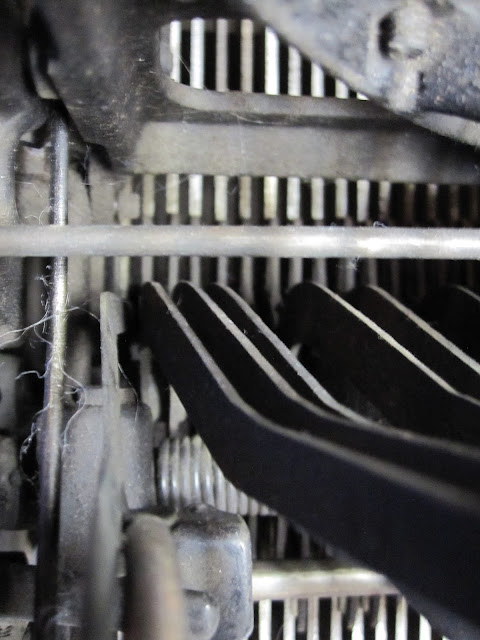Its been about a year since I acquired, and last cleaned and lubricated, my wonderful Fox model 25. Therefore, now is as good a time as any to dig back into it and make it shine. Drawing inspiration from Mr. Richard Polt's recent post over at The Typewriter Revolution, I decided to see how quick I could take the main accessories off the machine.
As it turns out, the Fox desktops were designed with interchangeable carriages in mind, and by loosening the two large screws towards the rear of the machine, where the carriage body connects to the frame, and taking off the ruler indicator, and ensuring the carriage strap has been hooked to the pin on the frame, the entire carriage pops right off. It takes less than a minute, depending on how fast you are at unscrewing the 4 screws. To take the platen out of the carriage, you simply loosen the two plates which hold it in (When you take a look at a Fox carriage, you'll notice these almost immediately) and out pops the platen, knobs and all. Finally, the front plate is held in by only two screws on the forefront of the machine. With all this taken off...
You have a machine very open and ready for a cleaning.
For the sake of it, I wanted to show how the machine works. Its design is very similar to that of an Underwood, I would like to note. Upon pressing a key, the bar of course moves downard. In doing so, it pulls on an end of a pivoted peice. (See far left bar)
This pivoting peice is long and vertical, reaching up to the top of the frame, and so the small movement at the base of the machine turns into a larger movement at the top
It is, at its top, also connected to the link which connects directly to the typebar.
Pulling the typebar from rest, and to the printing point.
This post brought to you by the Fox Typewriter Company. Writing is better when you experience it, on a Fox.


























